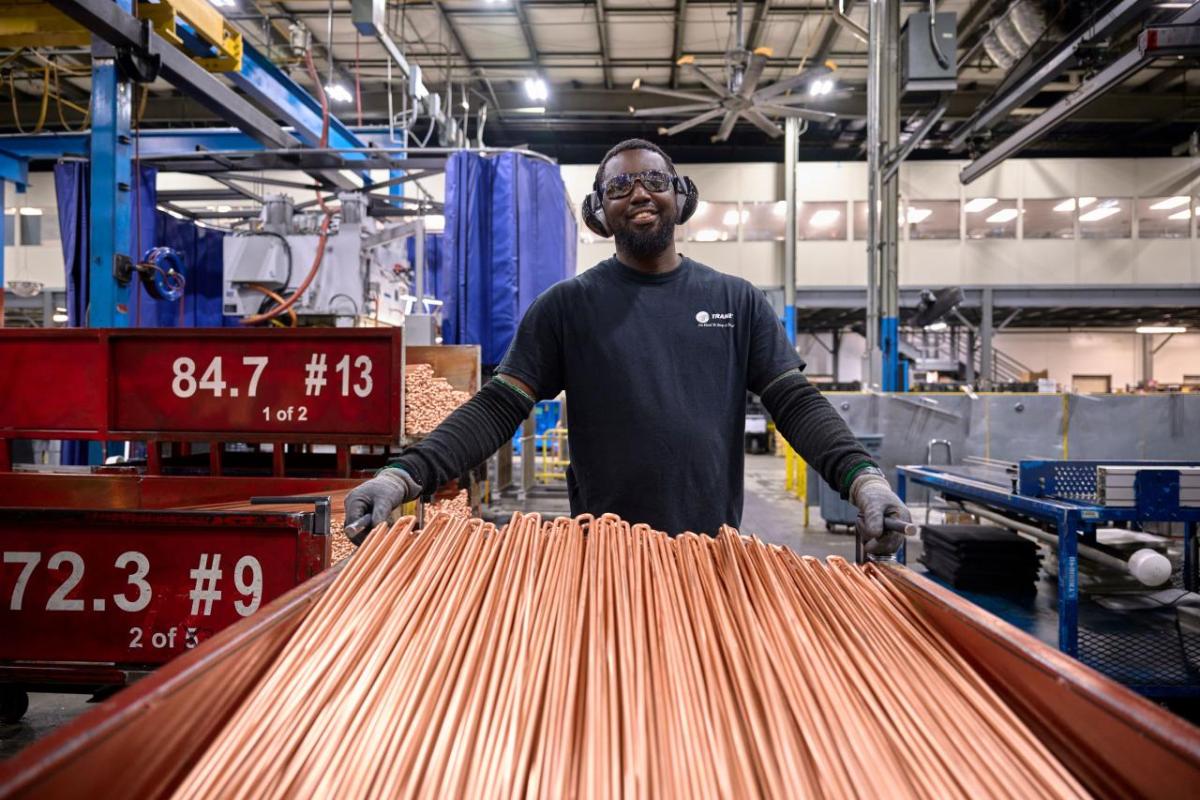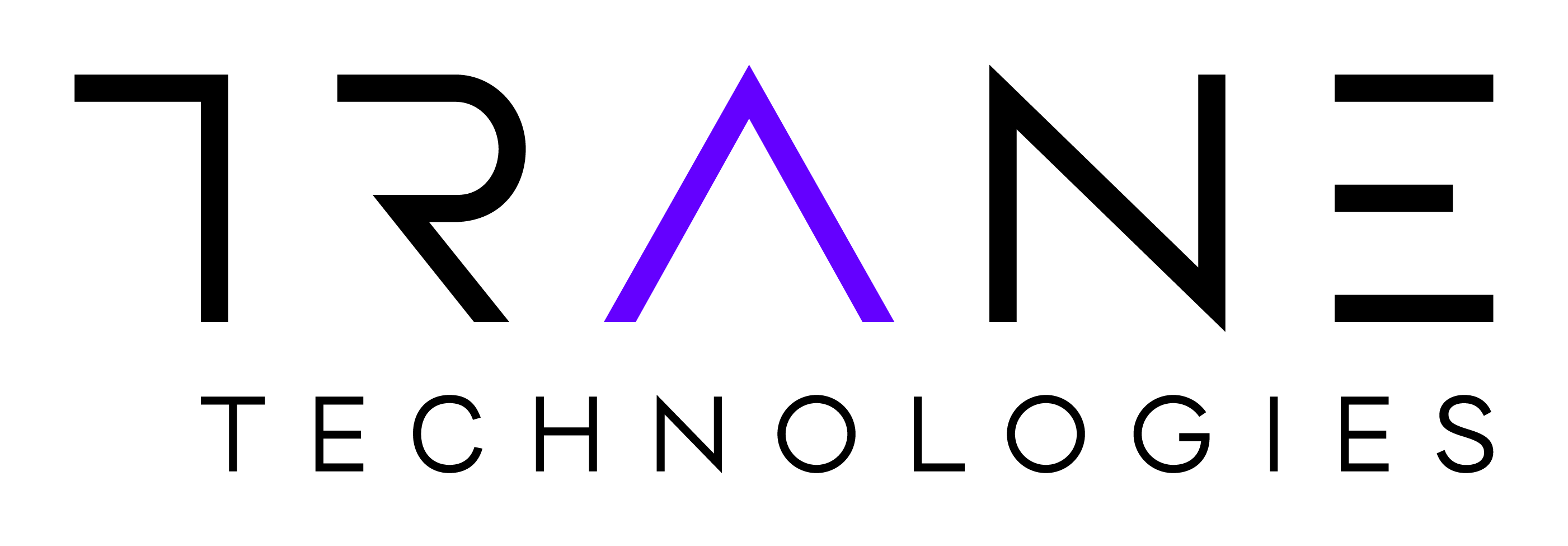Leading on Embodied Carbon
Trane Technologies’ sustainability and procurement leaders on the company’s move to reduce embodied carbon by 40%.

This article is co-authored by Paul Camuti, Executive Vice President and Chief Technology and Sustainability Officer, Trane Technologies and Kinnar Ghiya, Vice President, Procurement, Trane Technologies.
According to the World Business Council on Sustainable Development (WBCSD), in order to limit global warming to 1.5C or less in line with the Paris Agreement, it is essential to decarbonize our economy by 2050. And there is no decarbonizing our economy without decarbonizing buildings.
Embodied carbon in the built environment
Buildings are responsible for almost 40% of global energy and related carbon emissions: 28% from operational emissions—the energy needed to heat, cool and power them—and 11% from materials and construction. We are proud to be leading the reduction of operational emissions by achieving our 2030 Sustainability Commitments, but in order to achieve global climate goals, we also need to reduce the embodied carbon in building materials and equipment.
Embodied carbon refers to the total amount of greenhouse gas emissions associated with a product material’s lifecycle, including the extraction of raw materials, manufacturing, transportation and recycling. According to the World Green Building Council (WorldGBC), embodied carbon in building materials and equipment needs to be reduced by at least 40% from today’s levels by 2030 and to net-zero by 2050.
The embodied carbon footprint of buildings is made up of major building components like steel, concrete and aluminum, along with equipment like HVAC chillers and heat pumps and thermal storage systems, as well as electrical and plumping equipment. This is where Trane Technologies has a major opportunity to contribute.
Trane Technologies moves to reduce embodied carbon
Trane Technologies has announced a commitment to reduce embodied carbon by 40% by 2030. This is an industry-first, first-of-its-scale, precedent-setting commitment. It’s an expansion of our 2030 Sustainability Commitments, and it builds on our momentum for sourcing more sustainable solutions like low-carbon steel.
Industry-first and NGO aligned
WBCSD and WorldGBC have called for the building sector to reduce embodied carbon. And we are proud to be the first HVAC company to make the commitment. As a growth company, we don’t follow norms. We set them.
An expansion of our commitments
We have bold ambitions, set against aggressive baselines. We are constantly scanning the environment for opportunities to move faster and go farther. This new embodied carbon commitment is an expansion of our Leading by Example commitment to reduce the environmental impact of our own operations. As such, it is also set against a 2019 baseline.
Building on our momentum
In November 2022 we made a commitment to source low-carbon steel, and by November 2023, we had shipped more than one million HVAC units made with that low-carbon steel to homes, schools and data centers across the United States.
Our growth mindset and commitment to operational excellence serve as a system of checks and balances. With our deep experience, we know we need to test a bold commitment like this to ensure we can deliver. We have. And we will.
Collaborating with our suppliers
The building sector is incredibly interconnected. Our technology solutions are a component of buildings. And materials like steel, copper and aluminum are components of our solutions. Our suppliers have suppliers, and so on. We are transforming our economy. No one can do this alone.
And so we are collaborating with our suppliers to reduce carbon intensity across the value chain. This is a work in progress, and we are working together to bring transparency, standard approaches and efficient ways to measure and manage embodied carbon.
- Building materials: We will focus our efforts on partnering with suppliers of materials used in buildings and building equipment, including steel, aluminum, copper and refrigerants, while continuing to incorporate circular design criteria into our product development projects.
- All top-emitting categories can contribute, but a priority approach will be leveraged for those with the highest impact and scale.
One company can change an industry
From our customers to our own operations to our suppliers, we are looking for ways to reduce emissions every step of the way. With this new commitment, we are addressing both sides of the challenge to reduce our own and our customers’ carbon footprints: by reducing operational carbon through the Gigaton Challenge and embodied carbon through this expansion of our Leading by Example commitment.
Our strong sustainability performance is the direct result of our culture and the actions our people take every day to deliver on our commitments. Our procurement teams are excited by the challenge to reduce embodied carbon. It aligns with our constant focus on productivity, growth, resiliency and sustainability.
The products we manufacture have a significant lifetime, often upwards of 15-20 years or more. The actions we take today to reduce the embodied carbon of those products have far-reaching implications for achieving tomorrow’s goals. And beyond our products, the way we lead matters.
With this move to reduce embodied carbon, we are elevating the important research of our NGO partners, we are celebrating the good work of our suppliers, and we are leading our industry forward to a more sustainable future.
This article includes “forward-looking statements” within the meaning of securities laws, which are statements that are not historical facts, including statements that relate to our decarbonization efforts, our sustainability commitments and the impact of these commitments. These forward-looking statements are based on our current expectations and are subject to risks and uncertainties, which may cause actual results to differ materially from our current expectations. Factors that could cause such differences can be found in our Form 10-K for the year ended December 31, 2023, as well as our subsequent reports on Form 10-Q and other SEC filings. New risks and uncertainties arise from time to time, and it is impossible for us to predict these events or how they may affect the Company. We assume no obligation to update these forward-looking statements.

